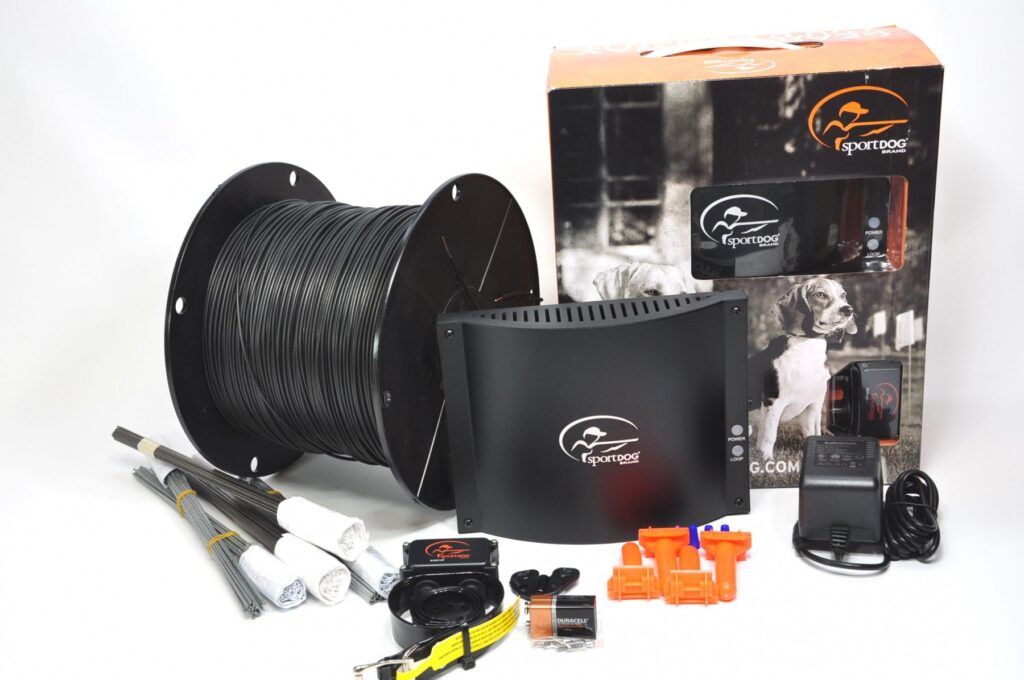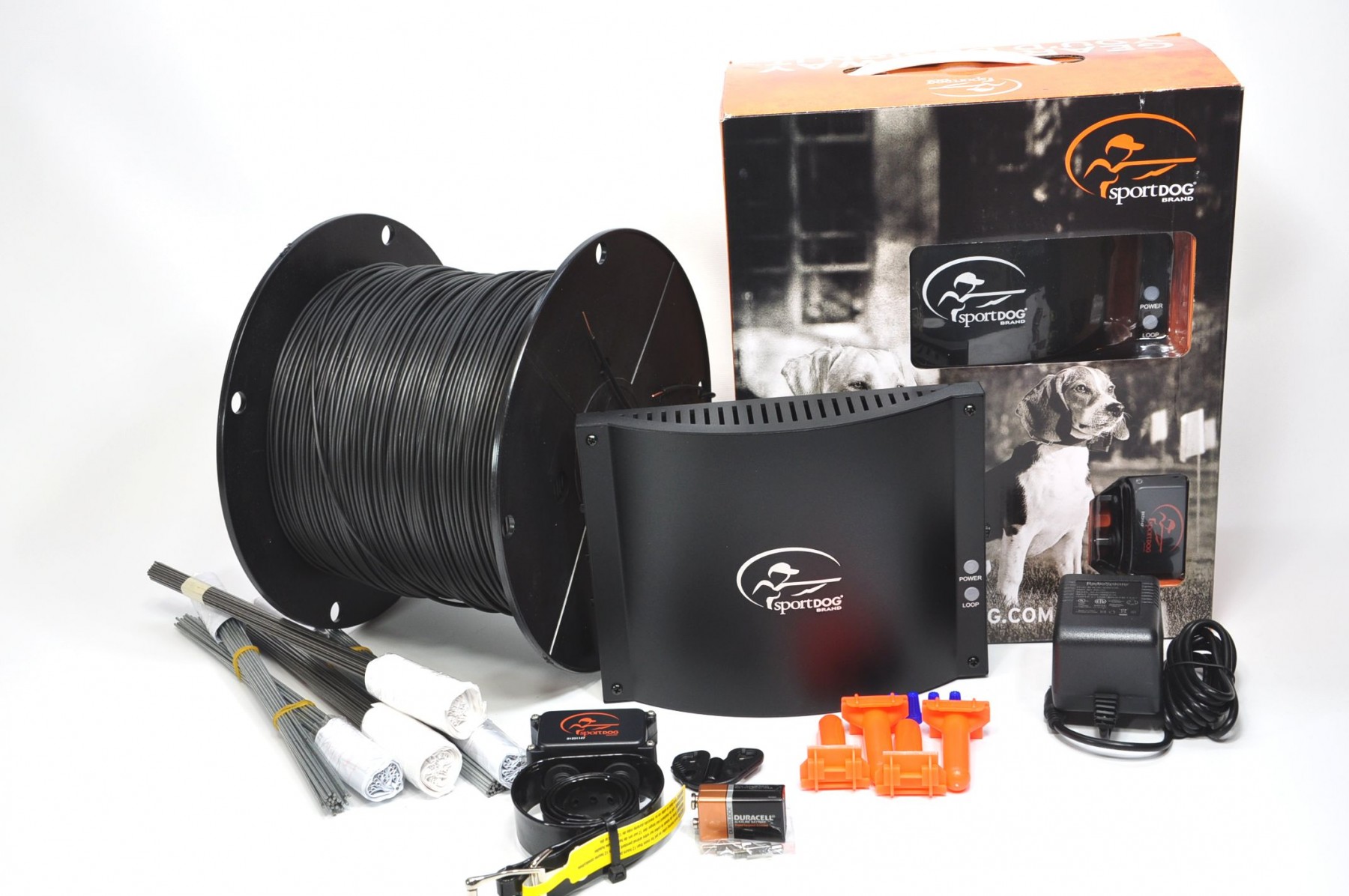
SportDog In-Ground Fence: A Comprehensive Guide to Pet Containment
Ensuring the safety and freedom of your beloved pets is a top priority for any responsible owner. One effective solution for pet containment is the SportDog in-ground fence. This comprehensive guide provides an in-depth look at the SportDog in-ground fence system, its benefits, installation process, and key considerations for choosing the right model for your furry friend. Understanding the nuances of the SportDog in-ground fence can help you make an informed decision about whether it’s the right solution for your pet’s needs and your property.
Understanding the SportDog In-Ground Fence System
The SportDog in-ground fence is an electronic pet containment system designed to keep your dog safely within the boundaries you set. Unlike traditional fences, which can be costly and visually obstructive, the SportDog in-ground fence offers a more discreet and often more affordable alternative. The system works by burying a thin wire around the perimeter of your yard. This wire emits a radio signal that interacts with a receiver collar worn by your dog. When your dog approaches the boundary, the collar emits a warning tone. If your dog continues closer to the boundary, the collar delivers a static correction, deterring them from crossing the line. The intensity of the correction is adjustable, allowing you to customize the system to your dog’s temperament and training level.
Key Components of a SportDog In-Ground Fence
- Transmitter: This unit generates the radio signal that travels through the buried wire. It’s typically installed indoors, such as in a garage or basement.
- Boundary Wire: This wire is buried around the perimeter of your yard and carries the radio signal. The length of wire included varies depending on the model.
- Receiver Collar: This collar is worn by your dog and receives the signal from the boundary wire. It emits a warning tone and, if necessary, a static correction.
- Training Flags: These flags are placed along the boundary line during the initial training phase to provide a visual cue for your dog.
- Connectors and Splices: These are used to connect the boundary wire to the transmitter and to repair any breaks in the wire.
Benefits of Using a SportDog In-Ground Fence
Choosing a SportDog in-ground fence offers several advantages over traditional fencing options:
- Cost-Effective: In-ground fences are generally less expensive to install than traditional fences.
- Aesthetically Pleasing: Because the wire is buried, the fence is virtually invisible, preserving the natural beauty of your yard.
- Versatile: In-ground fences can be configured to fit any yard size or shape, including irregular layouts and areas with challenging terrain.
- Customizable: You can adjust the correction level to suit your dog’s individual needs and temperament.
- Portable: The system can be easily moved if you relocate.
- Multiple Dog Compatibility: Most systems can accommodate multiple dogs with the purchase of additional receiver collars.
Installation of a SportDog In-Ground Fence
Installing a SportDog in-ground fence is a straightforward process that can be completed by most homeowners. However, professional installation is also an option if you prefer. Here are the general steps involved:
- Planning: Determine the desired boundary of your fence and plan the route for the boundary wire. Avoid areas with underground utilities.
- Wire Laying: Bury the boundary wire 1-3 inches underground along the planned route. You can use a lawn edger or a wire trencher to create a shallow trench.
- Connecting the Wire: Connect the ends of the boundary wire to the transmitter unit.
- Testing the System: Turn on the transmitter and test the signal strength along the boundary line using the receiver collar.
- Flag Placement: Place the training flags along the boundary line every 8-10 feet.
- Collar Fitting: Properly fit the receiver collar on your dog, ensuring that the contact points are touching their skin.
Tips for Successful Installation
- Check for Underground Utilities: Before digging, contact your local utility companies to locate any underground lines.
- Use High-Quality Wire: Invest in durable, waterproof boundary wire to ensure long-lasting performance.
- Properly Splice Wires: Use waterproof connectors to splice any breaks in the wire.
- Test the System Regularly: Periodically test the signal strength and battery life of the receiver collar.
Training Your Dog to Use the SportDog In-Ground Fence
Proper training is crucial for the success of your SportDog in-ground fence. The goal is to teach your dog to respect the boundary and avoid crossing it. Here’s a general training plan:
- Introduce the Collar: Allow your dog to wear the receiver collar for short periods each day so they become accustomed to it.
- Visual Cues: Walk your dog along the boundary line on a leash, pointing out the training flags.
- Audible Warning: Allow your dog to approach the boundary until the collar emits the warning tone. Immediately redirect them away from the boundary.
- Static Correction: If your dog continues to approach the boundary after the warning tone, allow them to receive the static correction. Immediately redirect them away from the boundary.
- Positive Reinforcement: Reward your dog with praise and treats when they stay within the boundary.
- Gradual Progression: Gradually increase the amount of time your dog spends off-leash in the yard, always under supervision.
Important Training Considerations
- Consistency: Be consistent with your training methods and commands.
- Patience: Training takes time and patience. Don’t get discouraged if your dog doesn’t learn immediately.
- Positive Reinforcement: Focus on rewarding good behavior rather than punishing bad behavior.
- Supervision: Always supervise your dog during the initial training phase.
Choosing the Right SportDog In-Ground Fence Model
SportDog offers several in-ground fence models to choose from, each with different features and capabilities. Consider the following factors when selecting a model:
- Yard Size: Choose a model that can accommodate the size of your yard. Some models can cover up to several acres.
- Number of Dogs: Ensure that the system can support the number of dogs you have. You may need to purchase additional receiver collars.
- Dog Temperament: Consider your dog’s temperament and training level when selecting a correction level.
- Features: Some models offer additional features, such as waterproof collars, adjustable correction levels, and low battery indicators.
- Budget: In-ground fence systems range in price, so consider your budget when making your selection.
Some popular SportDog in-ground fence models include the SportDog Brand In-Ground Fence System SDF-100A and the SportDog Rechargeable In-Ground Fence System SDF-300R. Research each model thoroughly to determine which one best suits your needs.
Troubleshooting Common Issues with SportDog In-Ground Fences
Even with proper installation and training, you may encounter some issues with your SportDog in-ground fence. Here are some common problems and how to troubleshoot them:
- Collar Not Working: Check the battery in the receiver collar and replace it if necessary. Ensure that the collar is properly fitted and that the contact points are touching your dog’s skin.
- Weak Signal: Check the boundary wire for any breaks or damage. Use a wire locator to find the break and repair it with waterproof connectors. Ensure that the transmitter is properly connected and that the signal strength is set to the appropriate level.
- Dog Escaping: Increase the correction level on the receiver collar. Reinforce training and ensure that your dog understands the boundary. Check the boundary wire for any gaps or inconsistencies.
- False Corrections: Ensure that the boundary wire is not running parallel to any metal objects, such as fences or pipes. Adjust the signal field width to minimize interference.
Maintaining Your SportDog In-Ground Fence
Proper maintenance is essential for ensuring the long-lasting performance of your SportDog in-ground fence. Here are some tips for maintaining your system:
- Check the Battery Regularly: Replace the battery in the receiver collar as needed. Some models have a low battery indicator.
- Inspect the Boundary Wire: Periodically inspect the boundary wire for any damage or breaks.
- Clean the Receiver Collar: Clean the receiver collar regularly to remove dirt and debris.
- Store the Transmitter Properly: Store the transmitter in a dry, protected location.
Alternatives to SportDog In-Ground Fences
While the SportDog in-ground fence is a popular choice for pet containment, there are other alternatives to consider:
- Traditional Fences: Traditional fences provide a physical barrier that can be effective for containing pets. However, they can be costly and visually obstructive.
- Wireless Fences: Wireless fences use a radio signal to create a circular boundary. They are easy to install but may not be suitable for all yard shapes.
- GPS Fences: GPS fences use GPS technology to track your dog’s location and create a virtual boundary. They offer greater flexibility but can be more expensive.
- Pet Containment Systems: Other brands offer similar in-ground fence systems, such as PetSafe and Invisible Fence.
Ultimately, the best pet containment solution depends on your individual needs and preferences. Consider the pros and cons of each option before making a decision.
Conclusion
The SportDog in-ground fence is a reliable and effective solution for pet containment, offering a cost-effective and aesthetically pleasing alternative to traditional fences. By understanding the system’s components, installation process, training requirements, and maintenance needs, you can ensure the safety and freedom of your beloved pets. Whether you choose the SportDog in-ground fence or another pet containment option, prioritizing your pet’s safety and well-being is paramount. [See also: Wireless Dog Fence Reviews] Remember to always consult with a professional trainer or veterinarian if you have any questions or concerns about pet containment.

